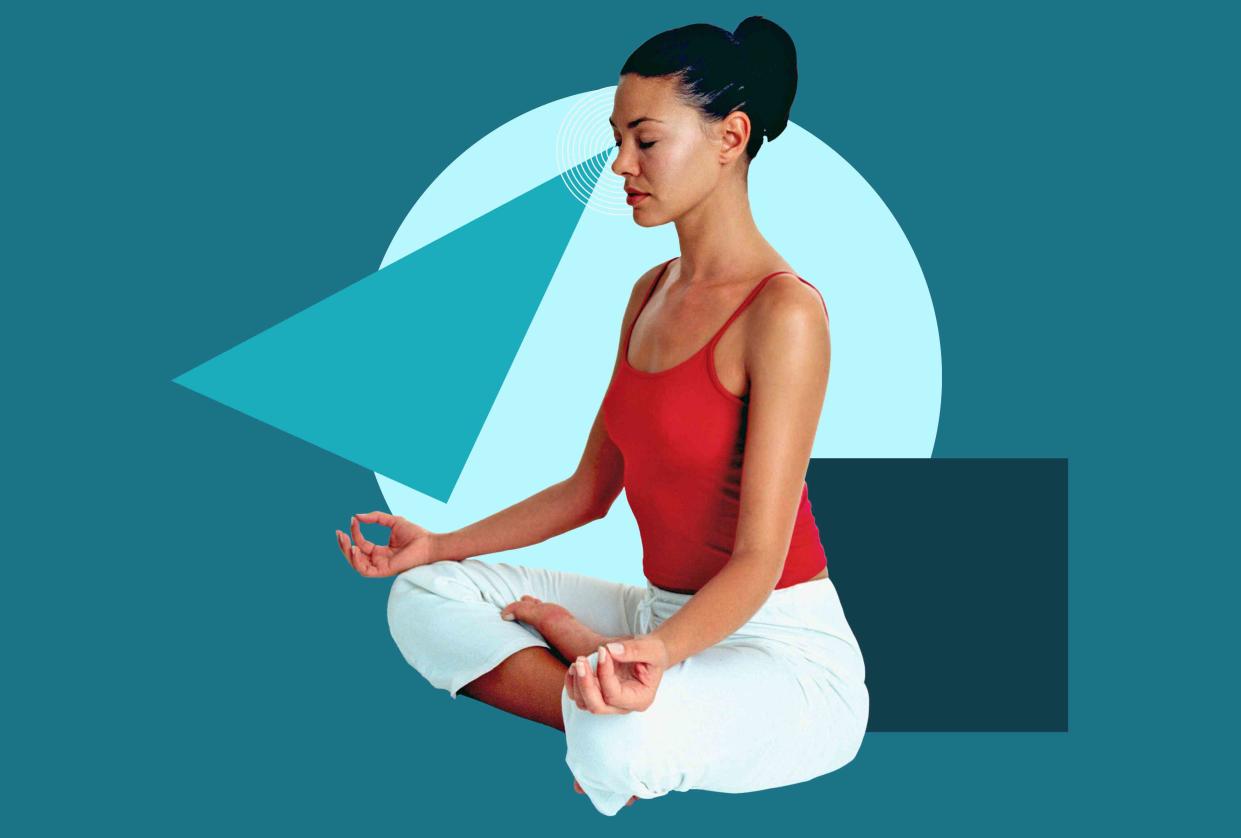What Is Pineal Gland Meditation? TikTok Says It Can Help You Fall Sleep Faster

Fact checked by Nick Blackmer
Key Takeaways
A viral TikTok claims that pineal gland meditation is an effective “sleep hack.”
While there’s no scientific evidence to prove that this breathing technique can help with sleep, meditation has been linked to the production of melatonin, a hormone that regulates the circadian rhythm and facilitates sleep.
Experts say breathing techniques or deep breathing, often used in meditation, can help counter the body’s “fight-or-flight” response.
If you’re looking for ways to fall asleep faster, some breathing techniques might help.
A recent viral TikTok claims that pineal gland meditation is a “sleep hack” that “works like magic.” It’s simple: Take five slow, deep inhales through the nose while clenching the rest of the body and hold each one for as long as possible before letting go.
Pineal gland meditation is often associated with “the third eye,” which refers to the point on the forehead between the brows in Hindu tradition. The pineal gland, which is located in the middle of the brain, does have a connection to sleep.
The main function of the pineal gland is to receive and give the body information about the current light-dark cycle of the environment through the production and secretion of melatonin, a hormone that helps regulate the circadian rhythm and sleep.
Although melatonin plays a role in regulating sleep-wake cycles and it’s often used as a sleep aid, there's no current evidence to suggest that pineal gland meditation can boost melatonin or promote better sleep, according to Harold Hong, MD, a board-certified psychiatrist and medical director of New Waters Recovery in North Carolina.
This breathing technique, however, does “include some elements of deep breathing and relaxation,” Hong said. Meditation can increase melatonin levels, leading to improved sleep quality and duration, he added.
A small study from 2015 found that older adults reported less insomnia, fatigue, and depression after completing a program that taught them meditation and mindfulness exercises.
Slowing down our breath cues our body to transition into a restful state because it mimics the deep, slow breathing pattern observed in sleep, according to Raffaello Antonino, PsyD, a registered counseling psychologist and senior lecturer in counseling psychology at London Metropolitan University.
“It tricks our bodies into a sleep-ready state,” Antonino told Verywell via email.
And the pineal gland meditation “isn’t necessarily superior or vastly different from other well-established relaxation and breathing techniques,” he added.
Related: Should You Use Melatonin for Sleep Regularly?
How Do Breathing Techniques Help With Sleep?
Meditation and breathing techniques can counter the body’s “fight-or-flight” response, according to Hong.
“When we take deep breaths, it stimulates the parasympathetic nervous system, which is responsible for the body’s ‘rest and digest’ response,” he said.
Hong explained that when the parasympathetic nervous system is activated, it reduces heart rate and blood pressure, which can lead to overall relaxation.
Other breathing techniques, such as diaphragmatic and box breathing, can achieve the same goal of sending the body a signal of safety, according to Christina Pierpaoli, PhD, a board-certified clinical psychologist specializing in geriatric behavioral sleep medicine.
Box breathing, or square breathing, has been shown to relax the nervous system. It consists of four four-second breaths in and out: 4-4-4-4.
Research shows that diaphragmatic breathing can also reduce blood pressure, heart rate, and anxiety. It involves inhaling and exhaling slowly and deeply through the nose for six seconds each time while engaging the diaphragm and keeping the chest still. You can place one hand on the chest and another on the belly to help concentrate on contracting the diaphragm with each breath.
According to Pierpaoli, practicing breathing techniques throughout your day at low activation periods—not just before bed—can increase their effectiveness when you do want to meditate before sleeping.
“Like sharpening a knife before cooking, practicing breathing techniques during the day enhances their effectiveness at night,” she said.
Read Next: How Does Deep Breathing Improve Your Digestion?
What This Means For You
While there isn’t any scientific evidence to support the claims that pineal gland meditation can help you fall asleep faster, studies have linked meditation to an increase in melatonin production. Meditation can help your body relax and prepare for you to sleep.

